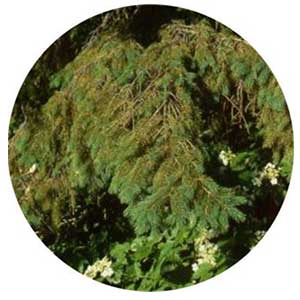Colorado and White Spruce, Pine and Fir.
DAMAGE:
Needlecast diseases cause spruce trees to “cast off” their older needles. The branches have green, healthy needles at the tips and diseased and dying needles toward the trunk. Trees affected by needlecast disease have needles that turn yellowish in the summer gradually changing to purplish brown in the late winter and spring. Often the infected, symptomatic needles don’t drop until the following year, working from the bottom to the top. The tree becomes unattractive and may look as though it is dying.
DESCRIPTION AND LIFECYCLE:
Year-old needles turn yellow, brown and then fall in the Spring a year after infection. Brown needles have tiny, black fungal fruiting structures in rows on either side of the midvein on the underside of the needle. Large bare areas develop on the tree as needles fall while the new, current year’s needles appear healthy. The black, spiked-looking fruiting structures sometimes appear to have fuzzy tops (like little spiders) when seen with magnification. If needles are green but stomates look black, it is usually Stigmina not Rhizosphaera.
CONTROL MEASURES:
- The first step is to get a reliable diagnosis.
- Avoid planting these highly susceptible trees if needlecast is in the area. Norway Spruce is resistant.
- Space trees and provide good weed control to ensure free air circulation around the tree.
- Apply fungicides when new shoots are 1.5 inches long and again 3 weeks later to protect young needles from infections that occur in May through June. For best control apply the fungicide for 3 consecutive years.



REFERENCES: OMAFRA; Jen Llewellyn onnurserycrops blog, Illinois Education Hort Answers, Joseph Obrien, USDA Forest Service
